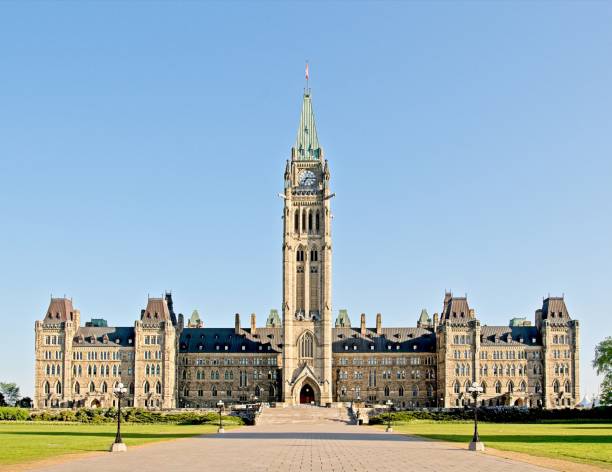
What is Canada’s immigration policy?
Canada’s immigration policy encompasses a range of programs and regulations that govern the entry of individuals into the country for temporary or permanent residence. The policy is designed to achieve various economic, social, and humanitarian goals. Here are some key aspects of Canada’s immigration policy:
- Economic Immigration: Canada’s immigration policy places a strong emphasis on attracting skilled workers to contribute to the country’s economy. Economic immigration programs, such as the Federal Skilled Worker Class (FSWC), Federal Skilled Trades Class (FSTC), and Canadian Experience Class (CEC), are managed through the Express Entry system. This system is designed to select candidates who are most likely to succeed economically in Canada.
- Family Reunification: The policy also prioritizes the reunification of families in Canada. This includes sponsorship programs for spouses, partners, children, parents, and grandparents.
- Refugee Protection: Canada is committed to providing protection to those in need through its refugee and asylum programs. This includes government-assisted and privately sponsored refugee programs, as well as protection for asylum seekers who make claims from within Canada.
- Provincial and Territorial Nomination: The Provincial Nominee Program (PNP) allows provinces and territories to nominate individuals who wish to immigrate to Canada and who are interested in settling in a particular province or territory.
- Humanitarian and Compassionate Grounds: Canada’s immigration policy includes provisions for individuals to apply for permanent residence on humanitarian and compassionate grounds.
- Quebec Immigration: The province of Quebec has a special agreement with the Government of Canada and has its own rules for selecting immigrants who will adapt well to living in Quebec.
- Temporary Residents: Canada’s policy also includes provisions for individuals to come to Canada temporarily, including students, temporary foreign workers, and visitors.
- Integration and Citizenship: The policy includes support for newcomers to help them integrate into Canadian society and eventually become citizens.
- Admissibility: Canada’s immigration policy includes rules about who may not be allowed to enter Canada, based on security, health, financial, or other reasons.
- Multiculturalism: Canada’s policy embraces multiculturalism and diversity, and it encourages immigrants to retain and share their cultural heritage while integrating into Canadian society.
Canada’s immigration policy is subject to change based on legislative amendments, evolving economic needs, demographic challenges, and international obligations. The policy is administered by Immigration, Refugees and Citizenship Canada (IRCC), which is responsible for applying and enforcing immigration laws and regulations.
Which programs is Canada using to achieve its immigration goals?
Canada achieves its immigration goals through a variety of programs, policies, and initiatives designed to attract, select, and integrate immigrants from around the world. Here are some of the key ways in which Canada works towards achieving its immigration goals:
- Express Entry System: Canada uses the Express Entry system to manage applications for permanent residence from skilled workers. Candidates are ranked based on factors such as age, education, work experience, and language proficiency, and those with the highest scores are invited to apply for permanent residence.
- Provincial Nominee Programs (PNPs): Provinces and territories have their own immigration programs that target specific needs in their labor markets. Through PNPs, provinces can nominate individuals for permanent residence who have the skills and experience required locally.
- Family Sponsorship: Canada promotes family reunification by allowing Canadian citizens and permanent residents to sponsor their relatives, including spouses, partners, children, parents, and grandparents, for permanent residence.
- Refugee Programs: Canada fulfills its humanitarian commitments by resettling refugees through government-assisted and privately sponsored programs, as well as by processing claims for refugee protection made by individuals already in the country.
- Global Skills Strategy: To attract highly skilled workers, Canada has implemented the Global Skills Strategy, which includes features like expedited work permit processing for certain high-skill occupations and a two-week processing time for eligible high-skilled workers.
- International Student Programs: Canada encourages international students to study at Canadian institutions, with the possibility of post-graduation work permits and pathways to permanent residence.
- Temporary Foreign Worker Program (TFWP): This program allows Canadian employers to hire foreign workers to fill temporary labor and skill shortages. Some streams of the TFWP also provide pathways to permanent residence.
- Rural and Northern Immigration Pilot: This community-driven program is designed to spread the benefits of economic immigration to smaller communities by creating a pathway to permanent residence for skilled foreign workers who want to work and live in one of the participating communities.
- Atlantic Immigration Program: This program helps employers in Canada’s Atlantic provinces—Nova Scotia, New Brunswick, Newfoundland and Labrador, and Prince Edward Island—to hire qualified candidates for jobs they haven’t been able to fill locally.
- Agri-Food Pilot: This pilot program provides a pathway to permanent residence for workers in specific agri-food industries and occupations.
- Caregivers Program: Programs for caregivers allow individuals who provide care for children, the elderly, or those with medical needs the opportunity to become permanent residents.
- Integration Services: Canada invests in settlement services, such as language training, employment services, and community support, to help newcomers integrate into Canadian society.
- Multiculturalism Policy: Canada’s commitment to multiculturalism helps create an inclusive society that is welcoming to immigrants, which in turn supports their integration and retention.
- Regular Policy Updates: Canada regularly updates its immigration level plans and policies to respond to current economic and social needs, as well as global trends and events.
By employing these and other strategies, Canada aims to meet its immigration targets, support its economy, reunite families, and uphold its humanitarian commitments. The specific goals and the means to achieve them are outlined in annual immigration levels plans and are subject to ongoing review and adjustment by Immigration, Refugees and Citizenship Canada (IRCC).
 Author:
Author:


